WEST HOLLYWOOD, Calif. — The Audi E-Tron GT is the first electric vehicle that feels like a legitimate flagship for its brand. It has presence, is blisteringly quick, and, most importantly, doesn’t seem like a slapdash effort to jump on the EV bandwagon. It’s a car, first and foremost, not a gimmick. And it’s a great one.
In the decade since the Tesla Model S upended the auto industry, traditional automakers have thrown everything at the EV wall to see what sticks, even if the result is massively compromised or wrong for the brand. The I-Pace might be a competent car, but does it convey Jaguar-ness? Does a BMW i3 accurately represent the blue-and-white roundel? Does a Mustang Mach E make Mustang devotees happy or mad?
The E-Tron GT, though, exudes the aura of an Audi. The design is sleek and modern without being too out there. It’s powerful like the RS6 without being an all-out sports car. It’s techy like an EV should be, but in a way that seems right for the brand.
The irony, of course, is that the E-Tron GT is really a Porsche Taycan in a (subjectively) more stylish suit. But whereas an all-wheel-drive luxury sedan doesn’t quite fit the traditional Porsche ethos, it’s just right for the marque that gave us broad-shouldered bruisers like the D2-generation S8.
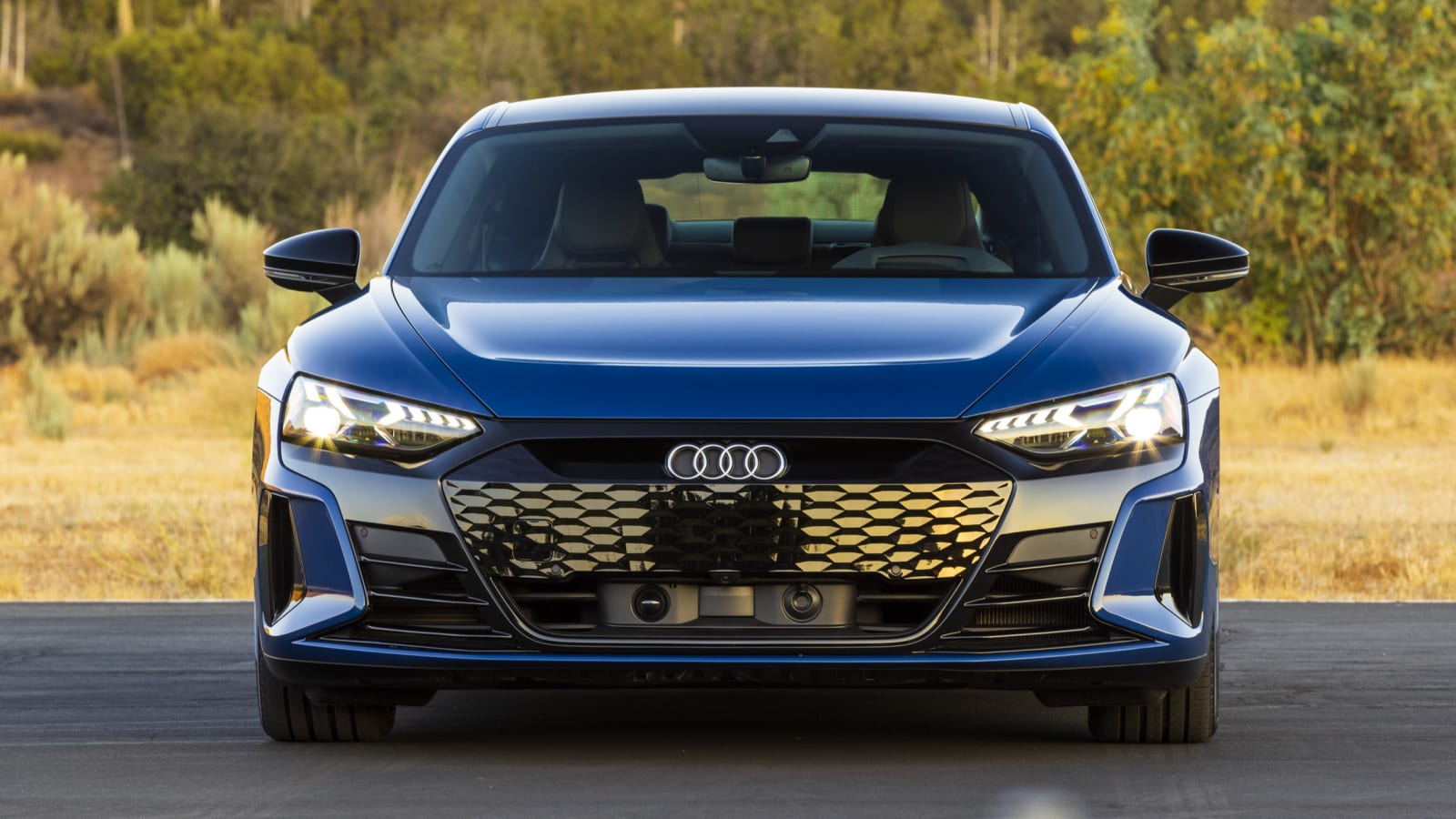
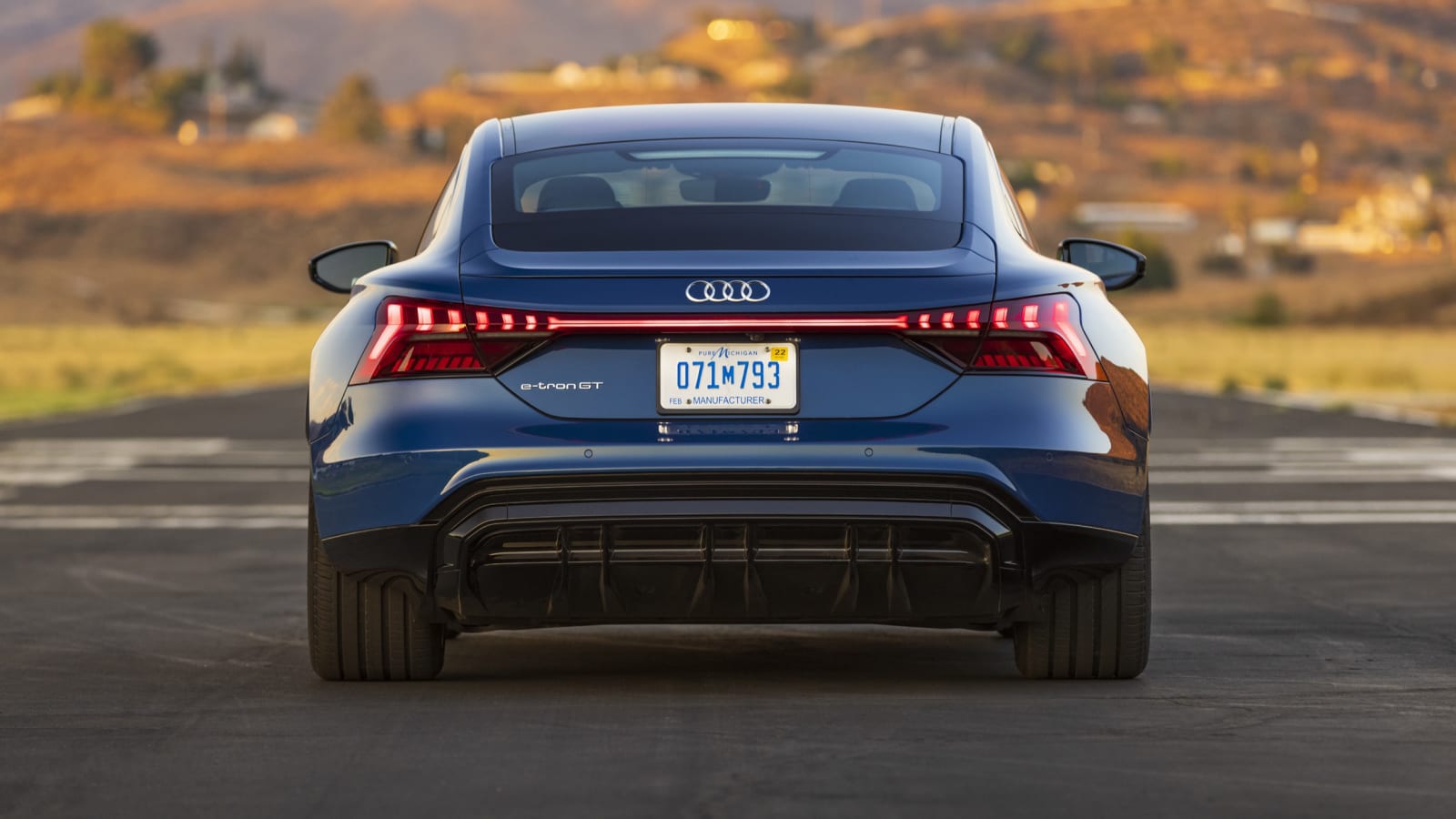
We came away impressed when we drove a pre-production Audi RS E-Tron GT earlier this year, and that was just a 30-minute spin. This time around, we got a full day’s worth of seat time in a regular E-Tron GT (pictured here in blue) and in a fully loaded RS E-Tron GT with the $20,350 Year One package (pictured in red). That gave us a deeper understanding of the subtle differences within the model range.
And yes, the differences are extremely subtle. Both come with a 93kWh battery pack running on an 800-volt system for faster charging. Both have dual electric motors providing all-wheel drive, with a single ratio for the front wheels and a two-speed transmission for the rears. Both come equipped with a standard three-chamber air-suspension system with double-wishbone arms up front and a multi-link setup at the rear.
Hardware-wise, there are some differences between the two trims. The RS comes with a carbon-fiber roof panel instead of a panoramic glass sunroof. Steel 14.2-inch front/14.1-inch rear discs stop the base version, while the RS gets carbide 16.1-inch front/14.4-inch rear rotors. Ceramic 16.5-inch fronts/16.1-inch rears can be ordered as an option on the RS. And the steer-by-wire has speed-dependent weighting in the RS.

A base E-Tron GT starts at $99,900 with an RS at $139,900 (both are eligible for a $7,500 federal EV tax credit). What does the additional $40,000 net you? Well, there’s the power, for one. The standard model’s output is 496 horsepower but can be pushed to 522 in overboost mode. Torque, similarly, is 464 lb-ft in normal driving, but there’s a total of 472 in reserve. The RS uncorks 590 horsepower, or 637 when boosted, along with a total of 612 lb-ft. That translates to a manufacturer’s stated 0–60 time of 3.9 seconds for the regular E-Tron and 3.1 for the RS.
To get the stuff that counts, though, you’ll have to spring for the Performance Package. On the regular E-Tron, that includes Audi’s e-torque vectoring system, matrix LED headlights, rear-wheel-steering and a bunch of cosmetic upgrades. The RS already comes with e-torque vectoring, but its Performance Package adds rear-wheel steering, the fancy headlights, 21-inch wheels, and a smorgasbord of carbon fiber accents for $8,450. The RS has an even more eye-watering $20,350 Year One package for launch models that gets you even more carbon fiber bits and exclusive wheels that look like those on the 2018 L.A. Auto Show concept car.
It’s hard to say whether it’s worth the extra clams for the RS. After all, the steering, suspension, and throttle response are programmed the same way between the two models. Even the regular E-Tron’s accelerative force hurtles you forward like there’s a cannonball pinned to your back. You won’t notice the missing horses in daily driving unless you’re constantly putting yourself in danger of a reckless driving charge. Range is nearly identical as well, 238 miles for the regular model and 232 for the RS.
In the RS, we managed 3.24-second 0–60 acceleration pulls on an unused airstrip with launch mode (turn off traction control, hold the brake and accelerator at the same time until the battery usage gauge starts pulsing to 100%, release left foot). And 0–100 took just 7.31 seconds.
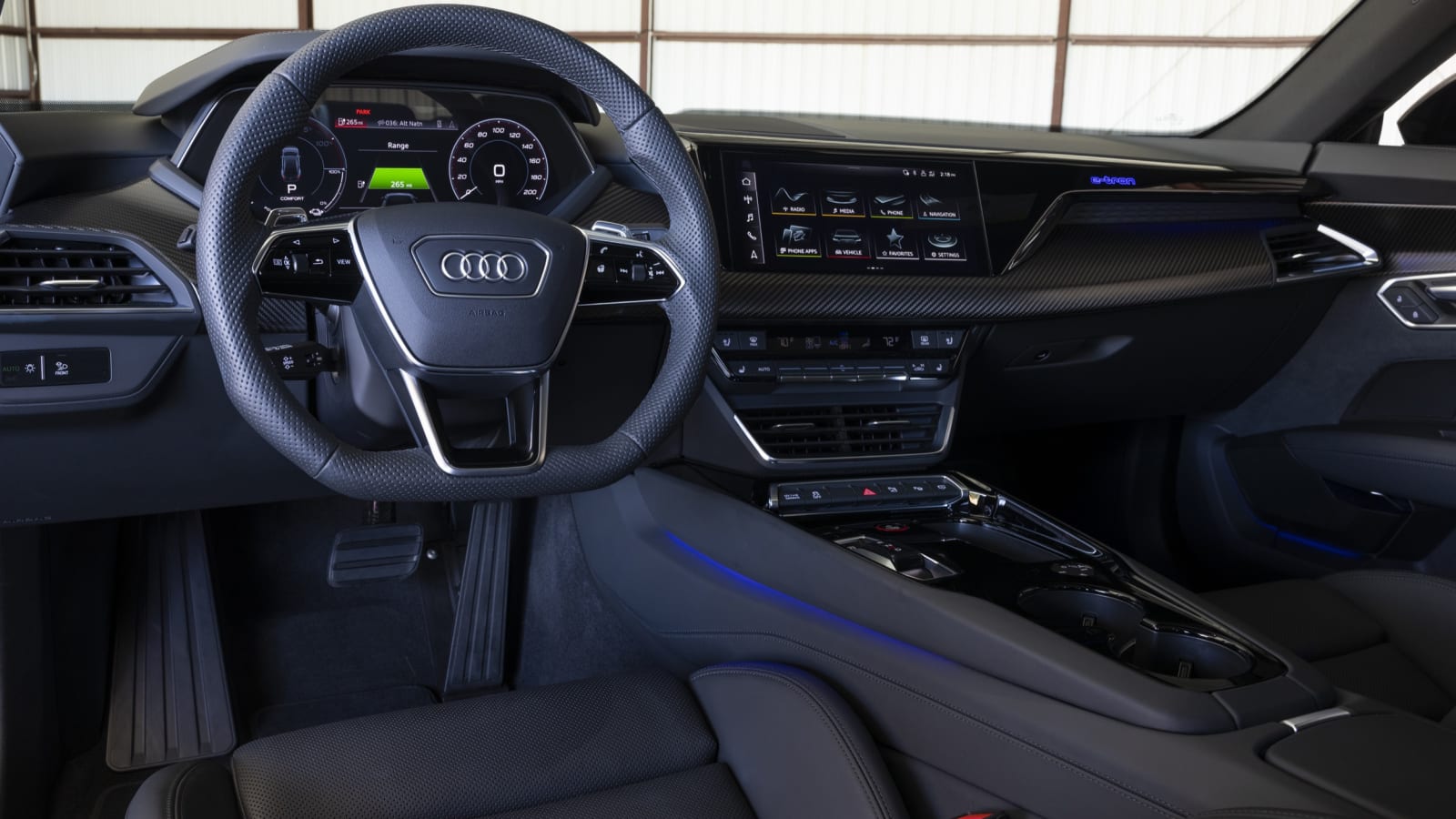
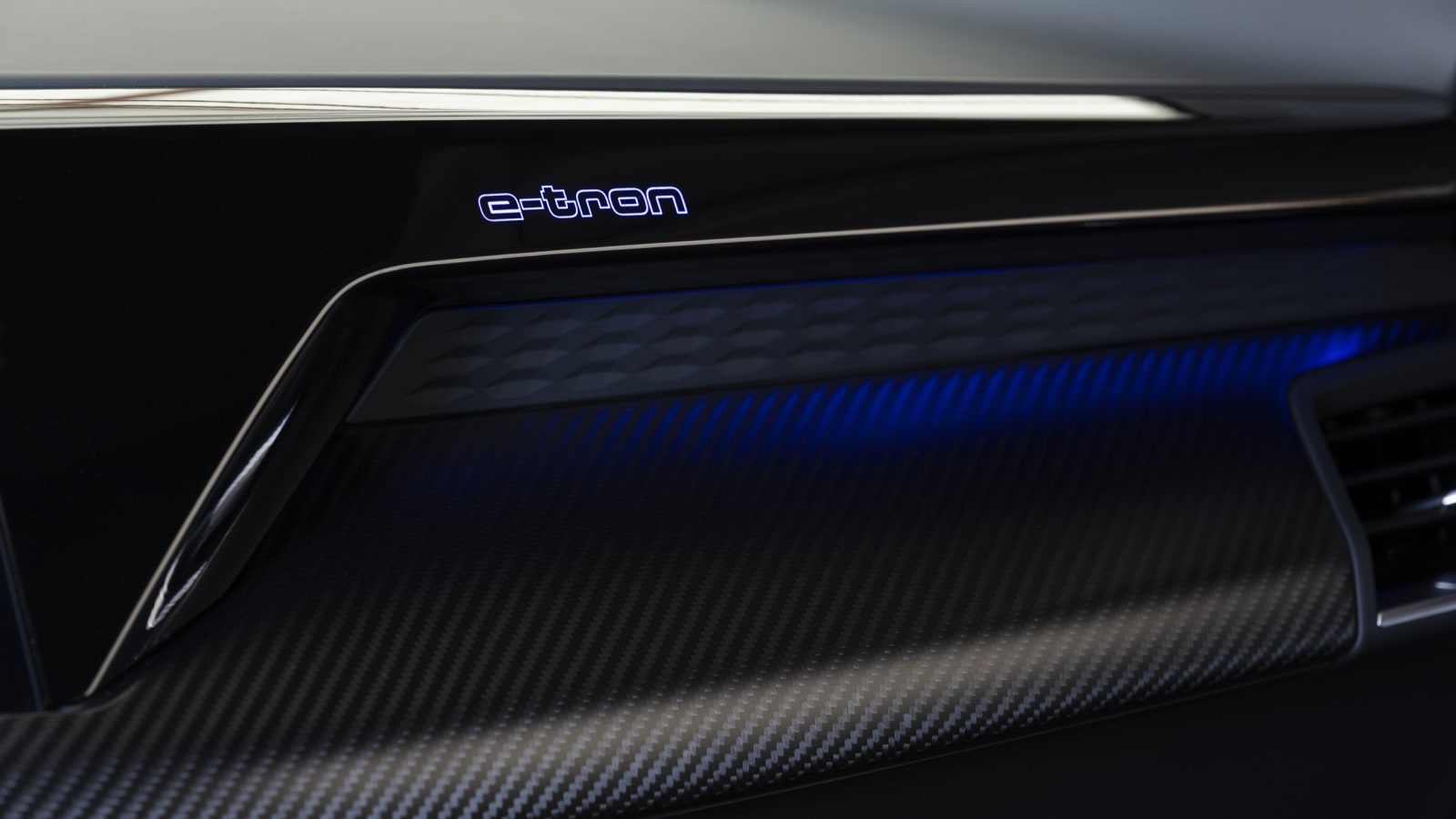
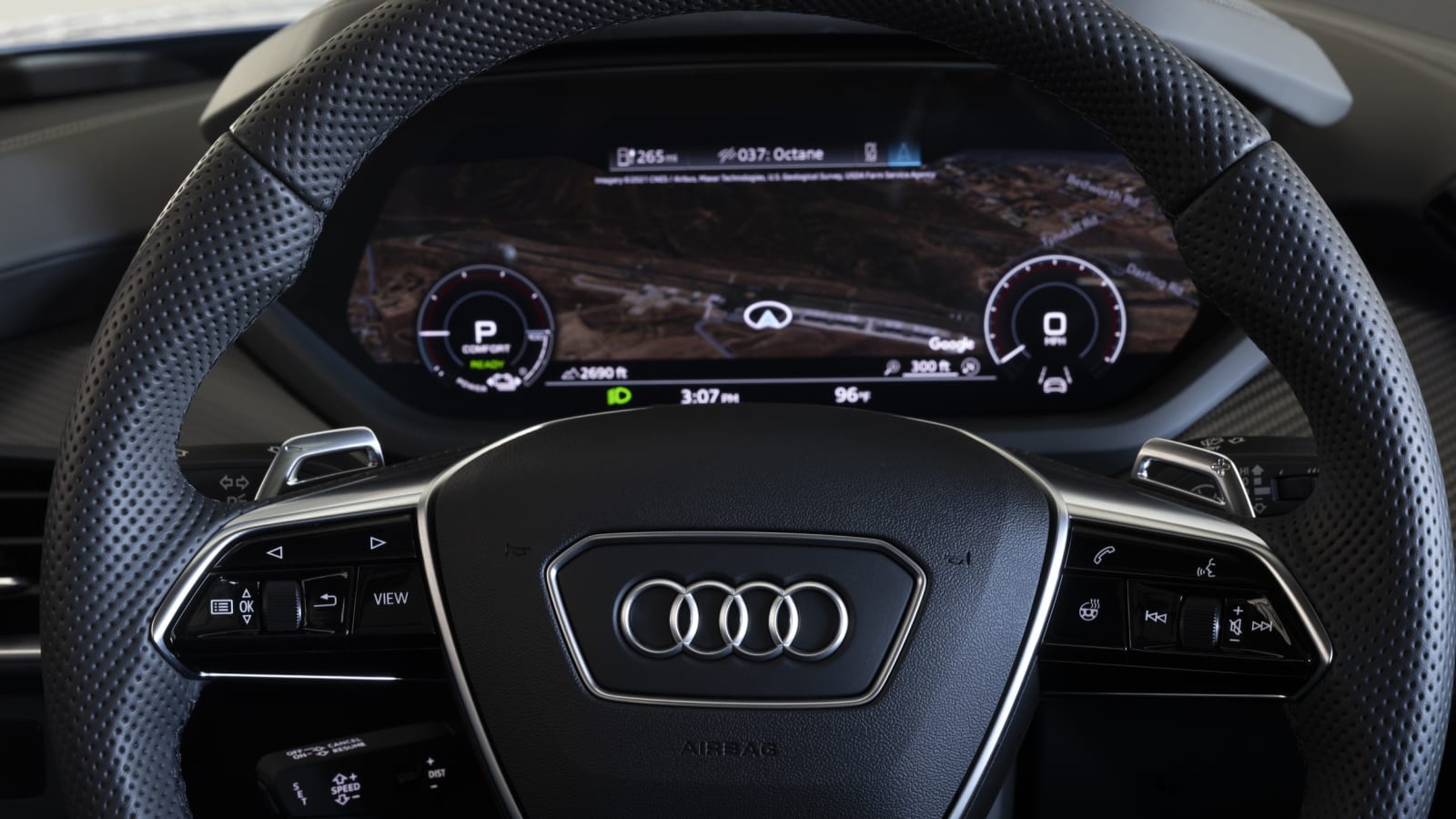
We will say that if you’re going to do any spirited driving, the Performance Package is a must. The torque distribution, locking rear diff and rear-wheel steering turn a 5,000-plus-pound slab of batteries into a surprisingly responsive canyon carver. We’d also definitely want the optional 21-inch wheels, as their extra bit of contact patch works wonders on quick, tight turns.
Undoubtedly, the purpose of the E-Tron GT is to be a grand tourer. It’s right there in the name. And to that effect, it does a superb job. The air suspension absorbs the beat-up pavement on our nation’s crumbling infrastructure better than many high-riding crossovers, while somehow maintaining the aforementioned handling prowess. Rear-wheel steering stabilizes the car like a bullet train at highway speeds and beyond.
And the car looks great doing it. The E-Tron GT is the best Audi design in years. It adds just the right amount of muscle to a sleek profile, especially in the swollen fenders that Audi calls Quattro blisters, a reference to the game-changing rally hatch from the 1980s. The front has a lot of black space, but Audi has just announced that due to customer demand, a body-colored bumper bar can be ordered as a $350 option. The only gripe is that from the rear corner view the C-pillar curves are a bit too Porsche-like, but overall we like the design even better than the Taycan on which it’s based.
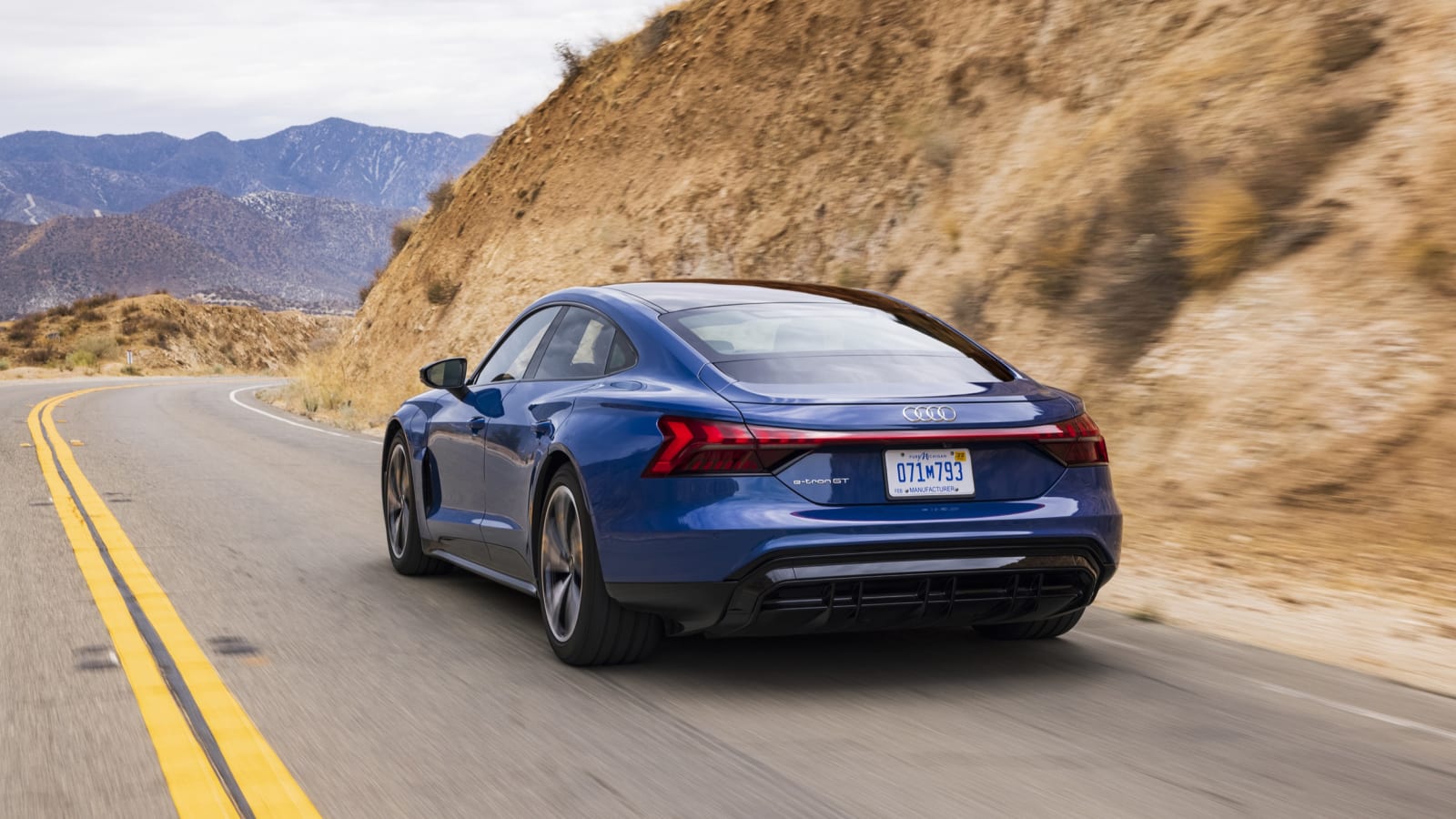
The interior, though, is where the car really shines. With beautifully designed surfaces on the dash and door panels and well-sculpted seats with animal-free upholstery (leather is an option if you must), it feels like a real luxury car. Taller rear passengers will find the rear headroom lacking, but drivers will be fine. The E-Tron GT eschews the massive screens found on some of its rivals, and even its Taycan cousin, in favor of a smaller 10.1-inch multi-media interface at the top of the center stack and physical climate control and drive mode buttons below.
The E-Tron GT cabin fires off the receptors in your brain that say “car,” and a nice one at that, whereas a Tesla fires off the ones that say “smartphone.” The Audi is just a much more pleasant, cozy, and traditionally car-like place to be. Yes, Musk can offer 400 miles of range, but depending on your driving needs, the E-Tron GT’s more pleasant experience may outweigh the benefit of extra range.
We think the E-Tron GT is a winning package and an excellent ambassador for EVs. It speaks the visual and tactile language of cars, while providing all the benefits of a Tesla underneath. Audi is positioning its E-Tron GT and RS E-Tron GT duo as halo models for the age of electricity, and for that role it’s perfect. It looks, feels, and behaves like an Audi, even though it has little in common mechanically with the Auto Union descendants of the last century. As we enter the next age of mobility, it’ll be up to each carmaker to figure out what defines their brand. Audi has struck a bullseye.
Related video:

